- Home
- Daniel Defoe
The Storm
The Storm Read online
PENGUIN CLASSICS
THE STORM
DANIEL DEFOE (1660-1731) had a variety of careers including hosiery merchant, owner of a brick and pantile works, soldier, secret agent and political pamphleteer. He was also a prolific and versatile writer and produced several hundred publications on a wide variety of topics ranging from economics, politics and history, to biography and crime, but it is for his novels, such as Robinson Crusoe (1719), Moll Flanders (1722) and Roxana (1724), that he remains best known.
RICHARD HAMBLYN is the author of The Invention of Clouds: How An Amateur Meteorologist Forged the Language of the Skies, which was shortlisted for the Samuel Johnson Prize 2002, and the editor of Earthly Powers, an anthology of eighteenth-century earth science writing. He is currently completing a collection of stories about natural disasters in history.
DANIEL DEFOE
The Storm
Edited with an Introduction and Notes by
RICHARD HAMBLYN
PENGUIN BOOKS
PENGUIN BOOKS
Published by the Penguin Group
Penguin Books Ltd, 80 Strand, London WC 2R 0RL, England
Penguin Group (USA) Inc., 375 Hudson Street, New York, New York 10014, USA
Penguin Books Australia Ltd, 250 Camberwell Road, Camberwell, Victoria 3124, Australia
Penguin Books Canada Ltd, 10 Alcorn Avenue, Toronto, Ontario, Canada M4V 3B2
Penguin Books India (P) Ltd, 11 Community Centre, Panchsheel Park, New Delhi-110017, India
Penguin Group (NZ), cnr Airborne and Rosedale Roads, Albany, Auckland 1310, New Zealand
Penguin Books (South Africa) (Pty) Ltd, 24 Sturdee Avenue, Rosebank 2196, South Africa
Penguin Books Ltd, Registered Offices: 80 Strand, London WC 2R 0RL, England
First published 1704
This edition first published by Allen Lane 2003
Published in Penguin Books 2005
2
Introduction and editorial matter copyright © Richard Hamblyn, 2003
All rights reserved
Except in the United States of America, this book is sold subject
to the condition that it shall not, by way of trade or otherwise, be lent,
re-sold, hired out, or otherwise circulated without the publisher’s
prior consent in any form of binding or cover other than that in
which it is published and without a similar condition including this
condition being imposed on the subsequent purchaser
9781101493267
Content
Acknowledgements
Chronology
Introduction
Further Reading
A Note on the Texts
The Storm
The Lay-Man’s Sermon upon the Late Storm
An Essay on the Late Storm
Notes
Acknowledgements
First and foremost, many thanks to Laura Barber for commissioning and overseeing this edition, and to Peter Straus for paving its way.
Thanks also to Markman Ellis, Chris Reid and the members of the Eighteenth-Century Disasters Reading Group at Queen Mary, University of London, for the opportunity to discuss The Storm, and for their generosity in sharing their insights into it. I have also enjoyed enlightening conversations about Defoe and the weather with Giles Bergel, Gregory Dart, William Fiennes, Charlotte Grant, Judith Hawley, Megan Hiatt, Gavin Jones, Joanna Lynch, Michael Newton, John Shaw and Nicholas Webb.
I would also like to thank the staff of the British Library, the Guildhall Library, the National Meteorological Library and Archive, and the Beinecke Library, Yale University, who were uniformly helpful and efficient, as were Judith Doré and the Deal Maritime Museum, and Michael Hunt of the Ramsgate Maritime Museum.
Chronology
1660 Daniel Foe born in London (exact date unknown), son of James Foe and Alice Foe.
1662 Act of Uniformity passed. The Foes follow the lead of their minister, Samuel Annesley, and leave the Church of England to become Presbyterian Dissenters.
1665-6 The Plague and the Great Fire, the first two disasters to hit London in Defoe’s lifetime.
c.1671-9 Attends the Revd James Fisher’s school at Dorking, Surrey, then the Revd Charles Morton’s Dissenting Academy in Newington Green, London. Plans to become a Presbyterian minister.
c.1683 Abandons the ministry and establishes himself instead as a hosiery merchant in London, living in Cornhill, near the Royal Exchange.
1684 Marries Mary Tuffley, whose dowry is worth £3,700.
1685-92 Fights in the rebellion against James II led by the Duke of Monmouth, then becomes a successful merchant dealing in wine, tobacco, hosiery and other goods. Travels on business throughout England and Europe.
1688 James II forced to abdicate; William of Orange becomes William III of England.
1692 Declared bankrupt for £17,000 and imprisoned for debt in the Fleet.
1694 With William III’s help, establishes a brick and pantile works at Tilbury, Essex.
1695 Begins to refer to himself as De Foe.
1697 Publishes An Essay on Projects, a socio-economic treatise written in prison. Becomes an agent for William III in England and Scotland.
1701 Publishes The True-Born Englishman, a poetic satire on xenophobia written in defence of the Dutch-born William III.
1702 Death of William III and accession of Queen Anne. Publishes Reformation of Manners, an attack on moral hypocrisy, and, in December, The Shortest-Way with the Dissenters, an attack on High Church extremists. A warrant is issued for his arrest in response to the latter.
1703 Goes into hiding in January, but is arrested in May, charged with sedition and sentenced to three days in the pillory and an indefinite stay in Newgate Prison. Publishes A Hymn to the Pillory in defiance. His brick and pantile works collapses and he is bankrupt once more. Released in November through the intervention of the Tory politician Robert Harley. Witnesses the 26-7 November storm and begins to write his first full-length work, The Storm.
1704-14 Becomes secret agent and political journalist for Harley and other ministers; travels widely in England and Scotland promoting the union of the two countries. Single-handedly writes the Review, a pro-government newspaper which appeared as often as three times a week. Publishes The Storm in July 1704.
1707 Union of England and Scotland.
1710 Tories in power.
1713-14 Arrested several times for debt and for political writings but released each time through government influence.
1714 Death of Queen Anne and accession of George I, Elector of Hanover; fall of Robert Harley and the Tory government.
1715 The Family Instructor, the first of Defoe’s conduct books.
1719 Robinson Crusoe, The Farther Adventures of Robinson Crusoe.
1720 Memoirs of a Cavalier, Captain Singleton, Serious Reflections…of Robinson Crusoe.
1722 Moll Flanders, Religious Courtship, A Journal of the Plague Year, Colonel Jack.
1724 Roxana, A General History of the Pyrates, A Tour thro’ the Whole Island of Great Britain (3 vols., 1724-6).
1725 The Complete English Tradesman (vol. II in 1727).
1726 The Political History of the Devil.
1727 Conjugal Lewdness, An Essay on the History and Reality of Apparitions, A New Family Instructor.
1728 Augusta Triumphans, A Plan of the English Commerce.
1729 The Compleat English Gentleman (not published until 1890).
1731 24 April: dies in Ropemaker’s Alley, London, in debt, hiding from creditors. 26 April: buried in Bunhill Fields.
Introduction
The storm of 26-7 November 1703 remains the worst storm in British history. An extratropical cyclone of unusual ferocity, it hammered into Britain from the North Atlan
tic at over seventy miles per hour, cutting a 300-mile-wide swathe of destruction across southern and central England and Wales, before moving on to Scandinavia and out across the Baltic Sea. It raged without pause between midnight and 6 a.m., during which time it claimed the lives of more than 8,000 people on land and unbelievable sea. It was, as Queen Anne described it in a public proclamation made at St James’s Palace on 12 December, ‘a Calamity so Dreadful and Astonishing, that the like hath not been Seen or Felt, in the Memory of any Person Living in this Our Kingdom.’1
Her words were no overstatement: a fifth of the seamen of the sovereign fleet were drowned that night, as were the crews of the dozens of merchant and fishing vessels that were lost amid the violence of the storm at sea. On land, the cities of London and Bristol were hit particularly hard, their streets left scattered with the debris from thousands of damaged buildings, while the rural landscape of southern Britain as a whole was reshaped overnight by the loss of millions of trees, uprooted by the strength and insistence of the wind.
The damage was terrible to behold, and the storm, both in its timing and its temper, was quickly claimed by many to have been a judgement from on high, a warning to those who had survived, and a punishment on those who had not. As Daniel Defoe suggested in the opening words of his Lay-Man’s Sermon upon the Late Storm (1704), a short tract written soon after the event, God chose the storm to be the vehicle of his wrath, the means by which to chastise London, ‘a Powerful, Populous, Wealthy and most reprobate City’, in an attempt to direct its forgetful inhabitants towards the path of godliness and repentance (p. 183).
In fact London, in common with much of the rest of the country, was already in the throes of meteorological introspection, and had been for some time. The weather, always a cause for complaint among the long-suffering British islanders, had been particularly bad that year, with what seemed endless bouts of rain and strong winds gusting in from the south and southwest. On 26 May 1703 Richard Chapman, the vicar of Cheshunt, preached a sermon on ‘the present War, and Strange Unseasonableness of the Weather at Present’, in which he interpreted the prevailing weather conditions as evidence of divine displeasure, and predicted that there would be worse to come should the country not turn wholeheartedly towards a renewed contemplation of God.2
Chapman’s warnings seem to have gone unheeded, however, for the days leading up to the arrival of the storm saw a sequence of deep lows and frontal wave depressions advance towards the British Isles from south and south-westerly directions. Depressions, or lows, are areas of low pressure which begin as small waves on polar fronts, as the boundaries between warm and cold air are known; such depressions are usually associated with cyclonic or unstable weather conditions. During the week before the storm, as many as five or six separate depressions, with their origins in the Atlantic waters off the coasts of France and Spain, coalesced over the British Isles, forming what the historical meteorologist Hubert Lamb described as ‘an increasingly vigorous cyclonic situation focussed over Britain’.3 Contemporary reports, including Defoe’s The Storm (1704), confirm that increasingly strong squally winds and rain buffeted the country for ten days or more, veering around the compass as the unstable moving air-masses collided and changed direction during their tempestuous wanderings north. These winds were already strong enough to cause some structural damage on land: Defoe describes a lucky escape on the evening of the 24th when, as he was walking past a neighbour’s house in the North London suburb of Newington Green, part of it suddenly collapsed due to the ‘unusual Violence’ of the wind (p. 26). But the damage caused by these late November gales was only a taste of what was just about to come in from the west: an entirely separate cyclonic system, a severe storm depression which almost certainly originated in the West Indies or off the coast of Florida, was rapidly making its way over the Atlantic. It would take three or four days for it to arrive in Britain from the coast of North America, but when it did, late on Friday night, 26 November, it would proceed to make its presence felt as it battered its way through the darkness in an east-north-easterly direction.
It was only when the sun rose on the morning of the 27th that the scale of the devastation became apparent. When Defoe, who hadn’t slept all night, ventured outside to inspect ‘the Havock the Storm had made’, he could hardly believe his eyes. He saw ‘the Streets covered with Tyle-sherds, and Heaps of Rubbish, from the Tops of the Houses, lying almost at every Door’, while ‘the Distraction and Fury of the Night was visible in the Faces of the People’ themselves (p. 33). London looked and felt, as many observers noted at the time, like a city in the aftermath of battle; a scene, as it quickly became apparent, that had been repeated throughout the rest of southern Britain. Defoe realized that this was something to which he, as a leading journalist and pamphleteer, would have to give serious attention, and as he walked through the London streets that morning, inspecting the damage and interviewing his neighbours on their own experiences of the night, he began to take the detailed notes that would lead to the writing of what became his first book: The Storm.
As his first full-length work, The Storm can be seen as a significant episode in Defoe’s literary career. He had, over the previous decade, produced some forty or so political and satirical poems and tracts, some of which, like The True-Born Englishman (1701), would prove enduringly popular in his lifetime. But as his first full-length experiment in narrative technique, as well as a move away from the outright polemic of his early works, The Storm marked a new departure in his writing career.
Many of the lessons learned during its months of composition would prove invaluable during the writing of his later and better-known novels, such as Robinson Crusoe (1719), Moll Flanders (1722) and A Journal of the Plague Year (1722), not just in his skilled handling of complex structures of space and time, and in his use of varied voices and multiple points of view, but in the unfolding sense of a shared moment of intense historical import. It was as if Defoe had suddenly discovered, amid the trials and losses of his storm-struck neighbours, the two great themes-collective suffering and individual survival-which he would go on to develop as his own.
In fact the storm made such an impression on Defoe that he ended up writing three separate and stylistically distinct pieces in reaction to it, all of which are reproduced in this volume: The Storm, The Lay-Man’s Sermon upon the Late Storm and An Essay on the Late Storm (all 1704). Taken together, the three pieces offer a valuable insight into the apparently contradictory ways in which Defoe reacted to events in both public and private life. It is impossible to know the exact order in which the pieces were started and finished, since Defoe made a habit of working on a number of projects simultaneously, moving between them whenever he alighted upon a suitable idea or phrase, but we know that Defoe began to work on The Storm in the days immediately following the event, and we can assume that he composed the other two pieces alongside it. The satirical Lay-Man’s Sermon was the first of the pieces to be published, appearing in the second week of February 1704, while The Storm and the poetic Essay on the Late Storm both appeared later on in the summer, by which time most of the physical damage caused by the storm had been repaired. But the memory of the night and its aftermath remained, and, as we will go on to see later in the introduction, Defoe was to make the most of what turned out to be a source of powerful and suggestive imagery.
In every other respect, however, 1703 was a terrible year for Defoe. He had had to spend the first five months of it in hiding, on the move from one safe house to another in and around London and the south of England, and possibly even spending some time in Holland, since a search was conducted for him there. His crime was to have published a satirical pamphlet, The Shortest-Way with the Dissenters (1702), which purported to have been written by an apoplectic High-Church Tory minister who proposed that the only sensible recourse for the security of Britain was to do to the Dissenters what Louis XIV had recently done to the Protestant Huguenots of France, that is, get rid of them through massacre and exile. �
��They are to be rooted out of this nation, if ever we will live in peace,’ wrote Defoe’s anonymous High Church minister, a view with which many of his High-flying readers would happily have agreed.4 The mysterious authorship of The Shortest-Way became a public controversy during the last weeks of 1702, but when the sermon was revealed to have been a mischievous hoax, in that it had been written not by an overheated Anglican clergyman but by Daniel Defoe, a well-known Dissenter and political friend of the recently dead King William III, a warrant for his arrest on the charge of ‘high crime and misdemeanour’ was promptly served by the government. ‘The Plot is discovered,’ the editor of one London newspaper smirked on 30 December 1702; ‘’Twas a pretty Sham enough’.5 But Defoe was now in serious trouble, for it seemed that the sham, whatever its intentions, had grossly insulted the new Queen, Anne, who had read the mock sermon, and was now taking a personal interest in seeing its author punished. Knowing the likely penalties that lay in store for him, Defoe decided to run; not because he imagined that he would never be caught, but to give himself time to negotiate with his enemies in an attempt to defuse their anger.
Defoe was right to be anxious. The sudden death of his patron and employer William III on 8 March 1702 had left Defoe exposed to the resentment of the new administration under Anne. Defoe had devoted much of his time to writing pamphlets and poems in praise of William and his policies of toleration towards the Dissenters, but some of these had included personal attacks on a number of High-Church Tory politicians who now enjoyed influence within the government. They were keen for the slightest excuse to get even with the author of satires such as The True-Born Englishman (1701) or Reformation of Manners (1702), the latter of which had poured public scorn on the very judges in front of whom Defoe would soon be standing. He knew that they were unlikely to be lenient, and that the kinds of punishment they might well recommend included whipping, branding, pillorying and imprisonment. Only a few months earlier another Dissenting author, William Fuller, had been found guilty of seditious libel and was pilloried for three days, given thirty-nine lashes and committed to prison with hard labour.

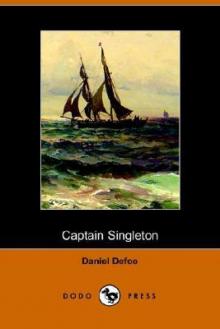 Captain Singleton
Captain Singleton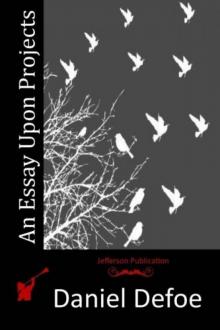 An Essay Upon Projects
An Essay Upon Projects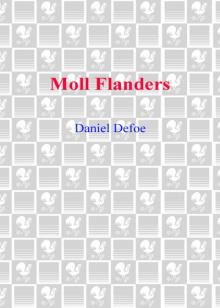 Moll Flanders Moll Flanders Moll Flanders
Moll Flanders Moll Flanders Moll Flanders The Further Adventures of Robinson Crusoe
The Further Adventures of Robinson Crusoe Everybody's Business Is Nobody's Business
Everybody's Business Is Nobody's Business Robinson Crusoe
Robinson Crusoe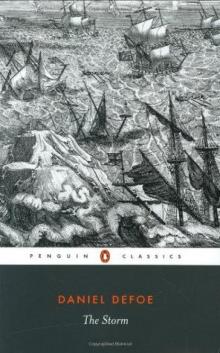 The Storm
The Storm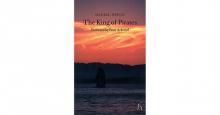 The King of Pirates
The King of Pirates History of the Plague in London
History of the Plague in London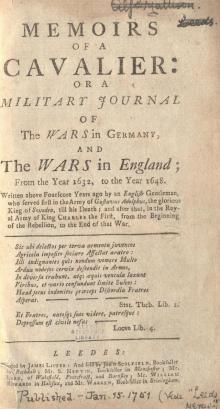 Memoirs of a Cavalier
Memoirs of a Cavalier_preview.jpg) The Life and Most Surprising Adventures of Robinson Crusoe, of York, Mariner (1801)
The Life and Most Surprising Adventures of Robinson Crusoe, of York, Mariner (1801)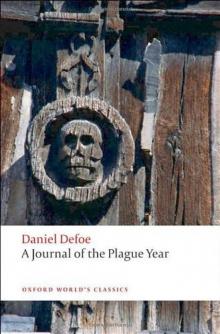 A Journal of the Plague Year
A Journal of the Plague Year_preview.jpg) The Life and Adventures of Robinson Crusoe (1808)
The Life and Adventures of Robinson Crusoe (1808)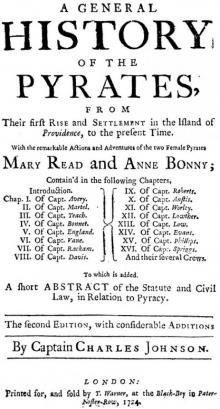 A General History of the Pyrates: / from their first rise and settlement in the island of Providence, to the present time
A General History of the Pyrates: / from their first rise and settlement in the island of Providence, to the present time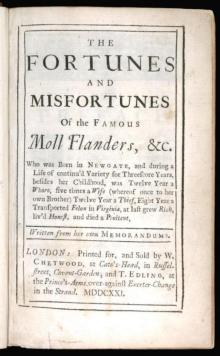 The Fortunes and Misfortunes of the Famous Moll Flanders
The Fortunes and Misfortunes of the Famous Moll Flanders_preview.jpg) The Fortunate Mistress (Parts 1 and 2)
The Fortunate Mistress (Parts 1 and 2) Robinson Crusoe — in Words of One Syllable
Robinson Crusoe — in Words of One Syllable From London to Land's End
From London to Land's End A New Voyage Round the World by a Course Never Sailed Before
A New Voyage Round the World by a Course Never Sailed Before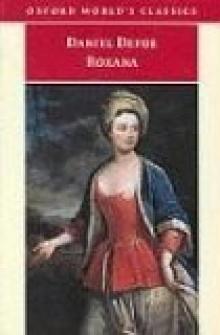 Roxana
Roxana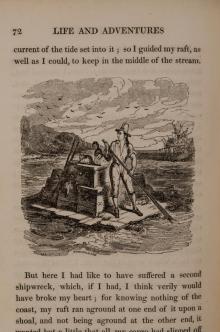 The Life and Adventures of Robinson Crusoe of York, Mariner, Volume 1
The Life and Adventures of Robinson Crusoe of York, Mariner, Volume 1_preview.jpg) Memoirs of Major Alexander Ramkins (1718)
Memoirs of Major Alexander Ramkins (1718)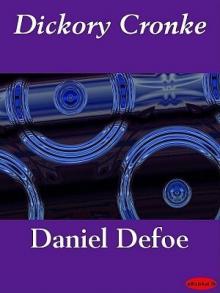 Dickory Cronke
Dickory Cronke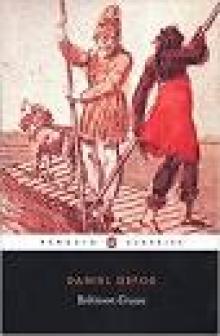 Robinson Crusoe (Penguin ed.)
Robinson Crusoe (Penguin ed.)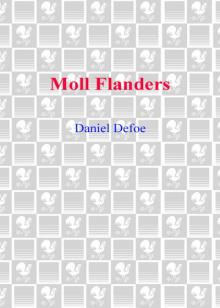 Moll Flanders
Moll Flanders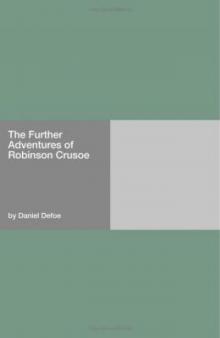 The Further Adventures of Robinson Crusoe rc-2
The Further Adventures of Robinson Crusoe rc-2